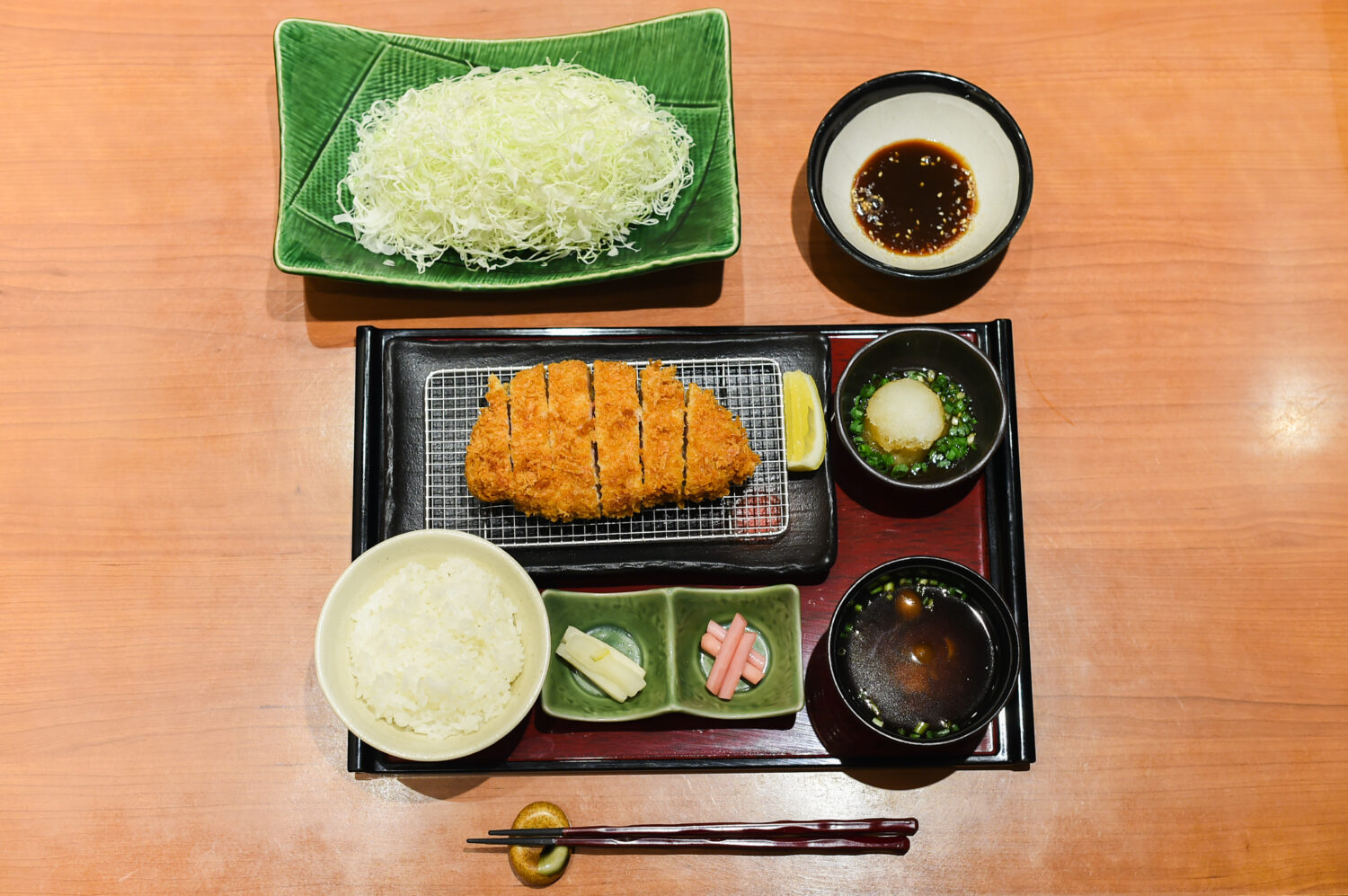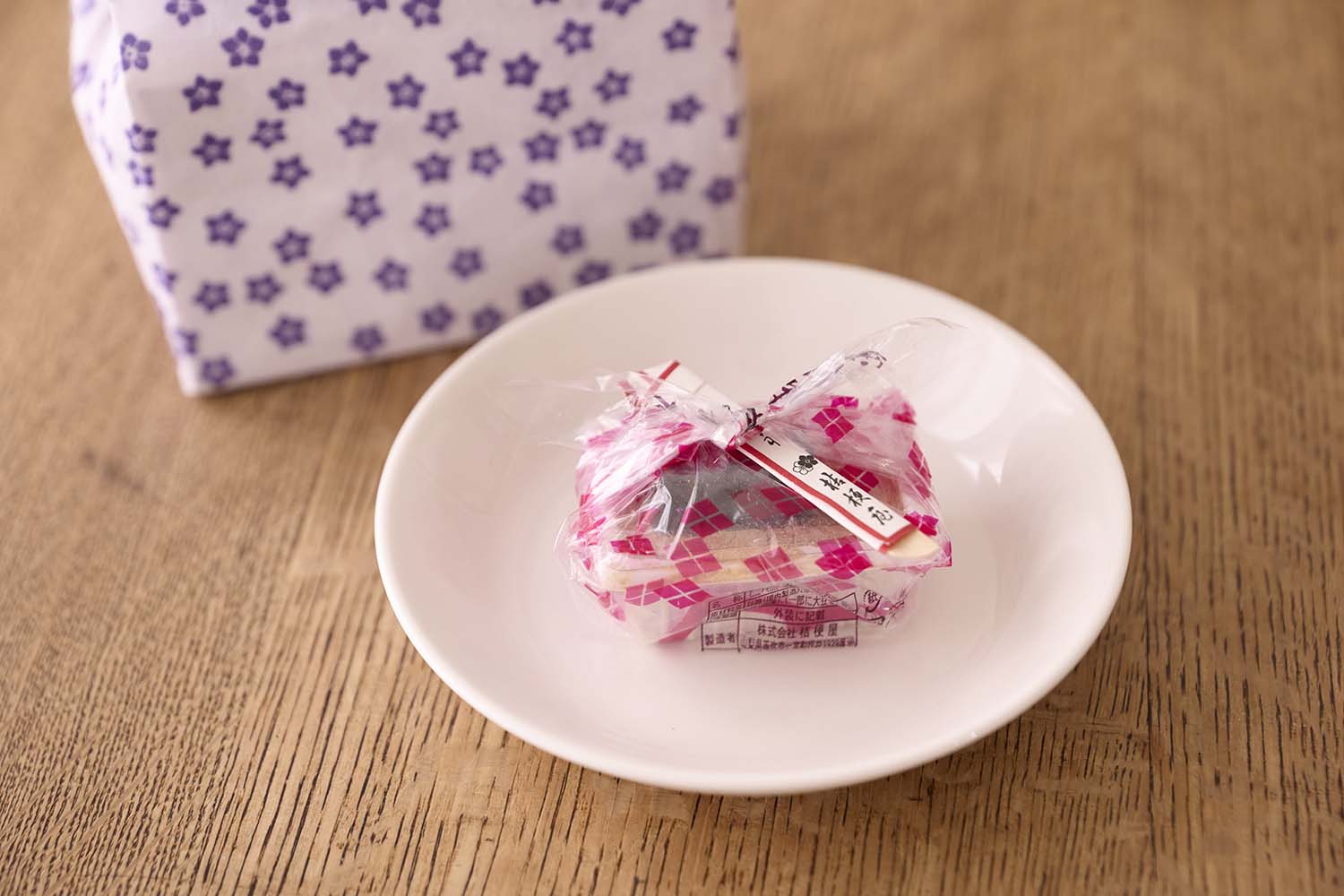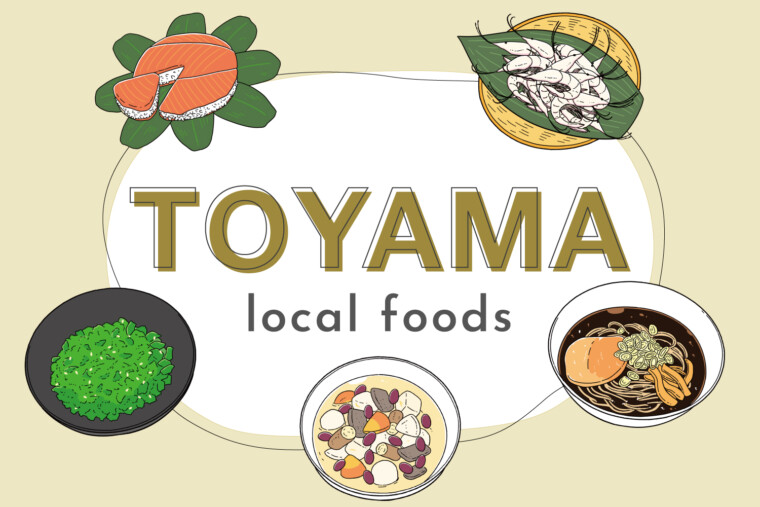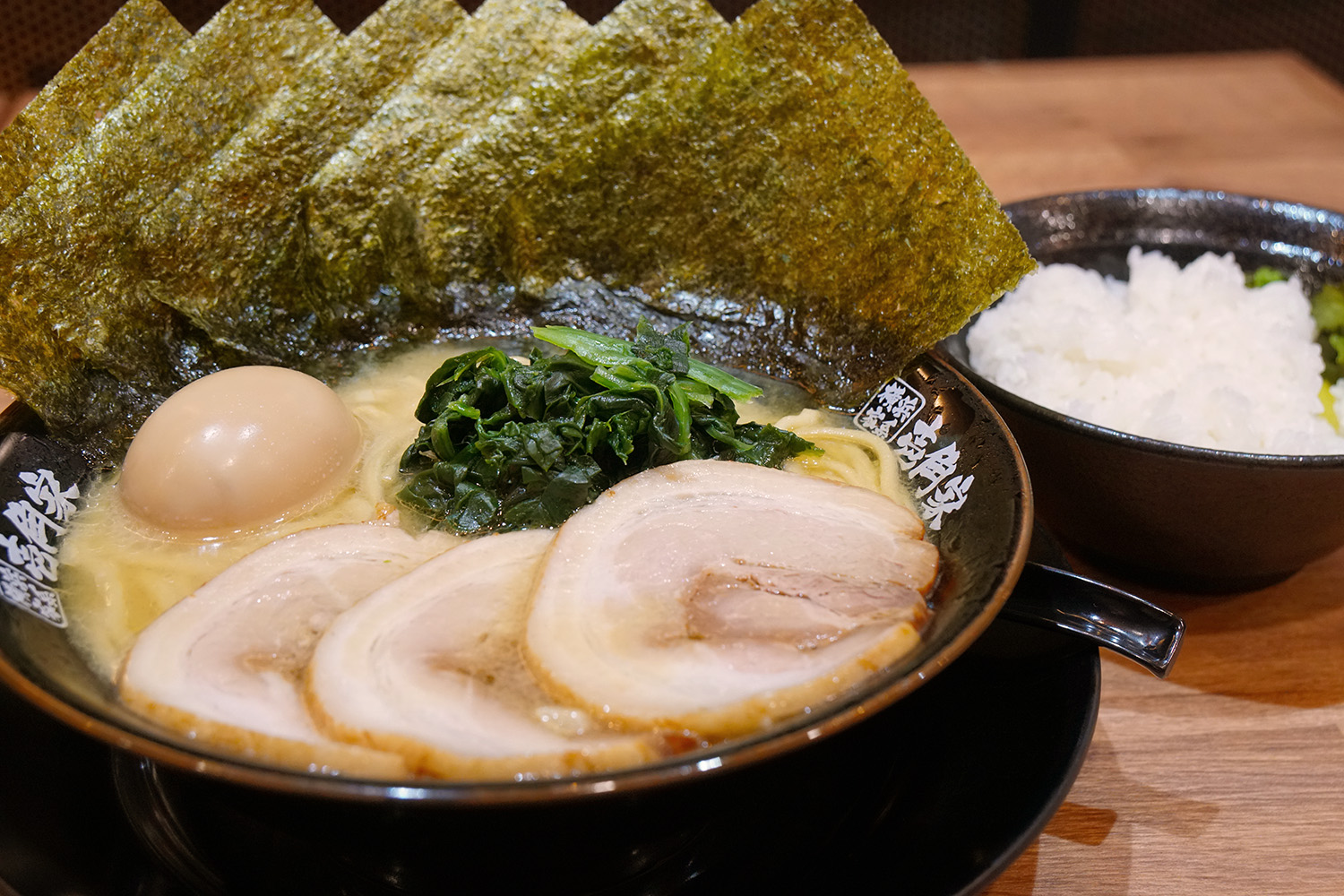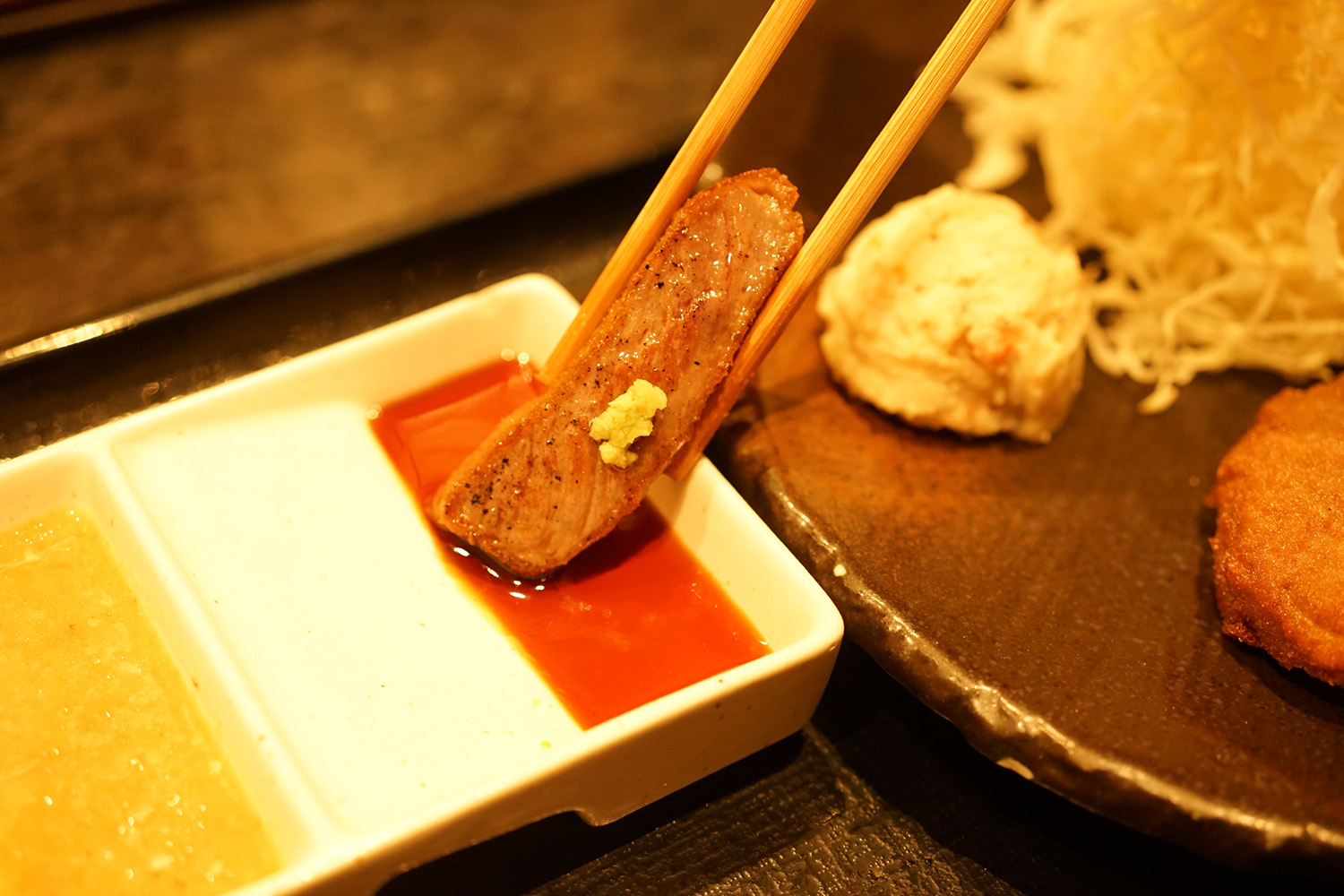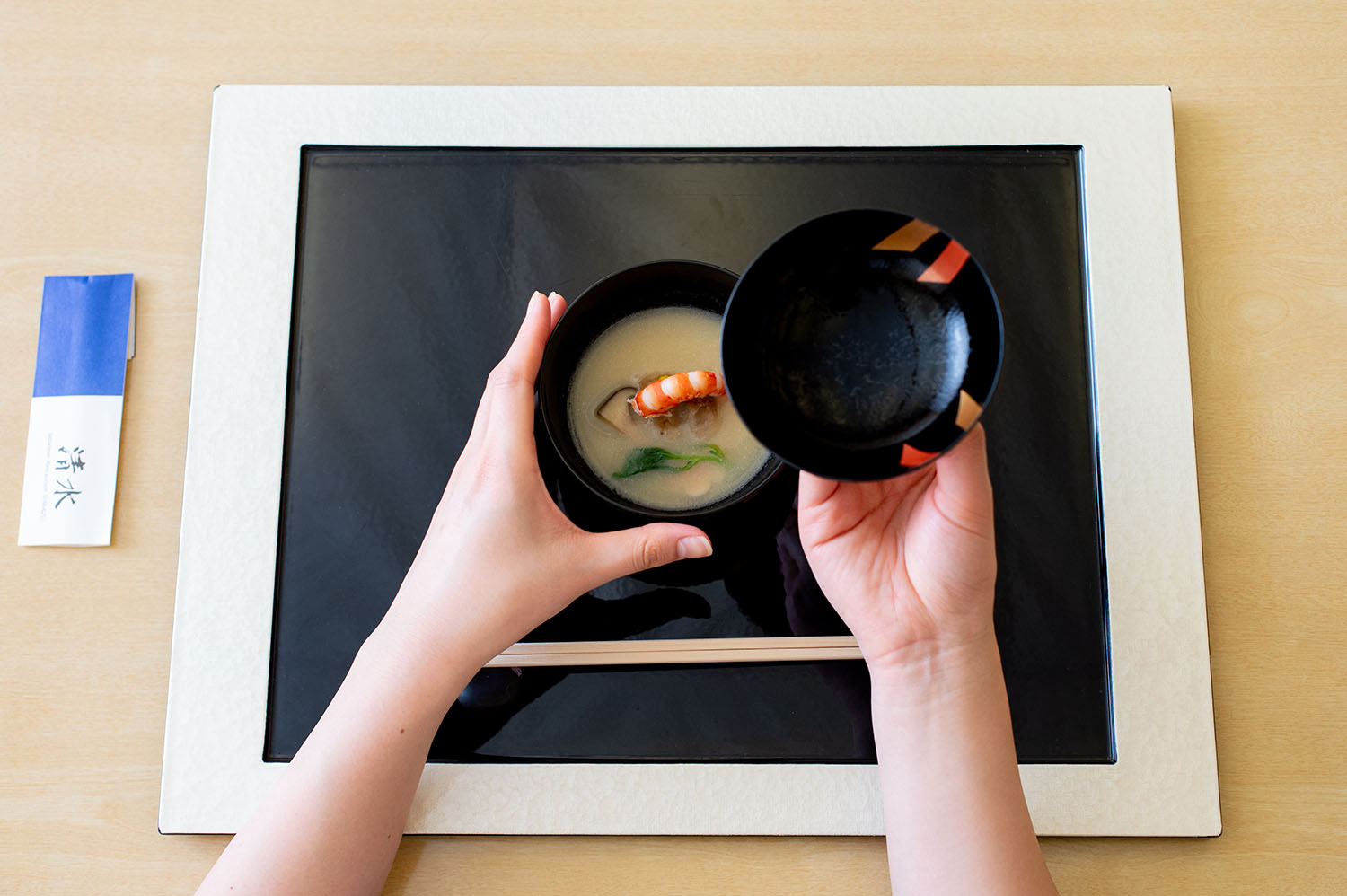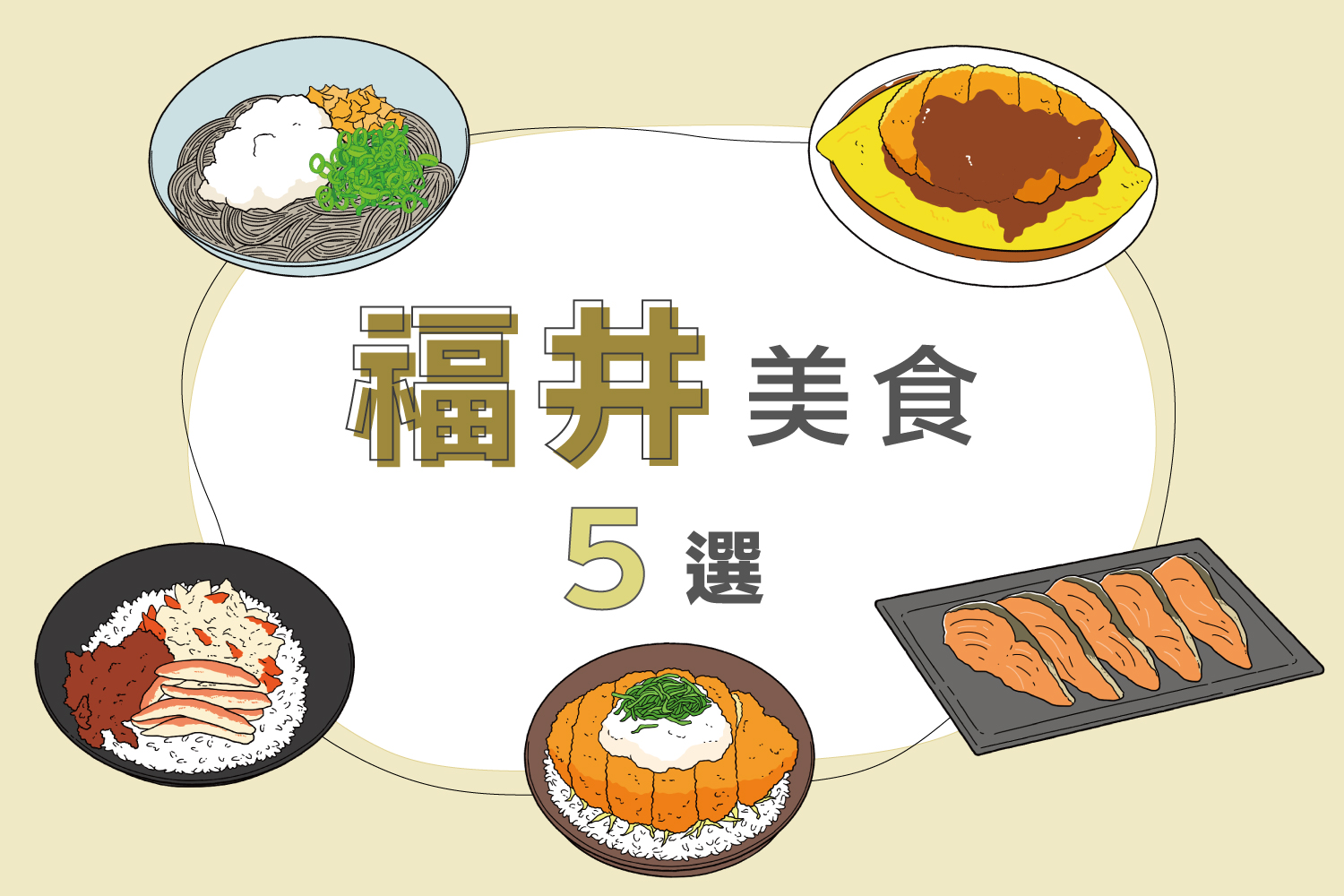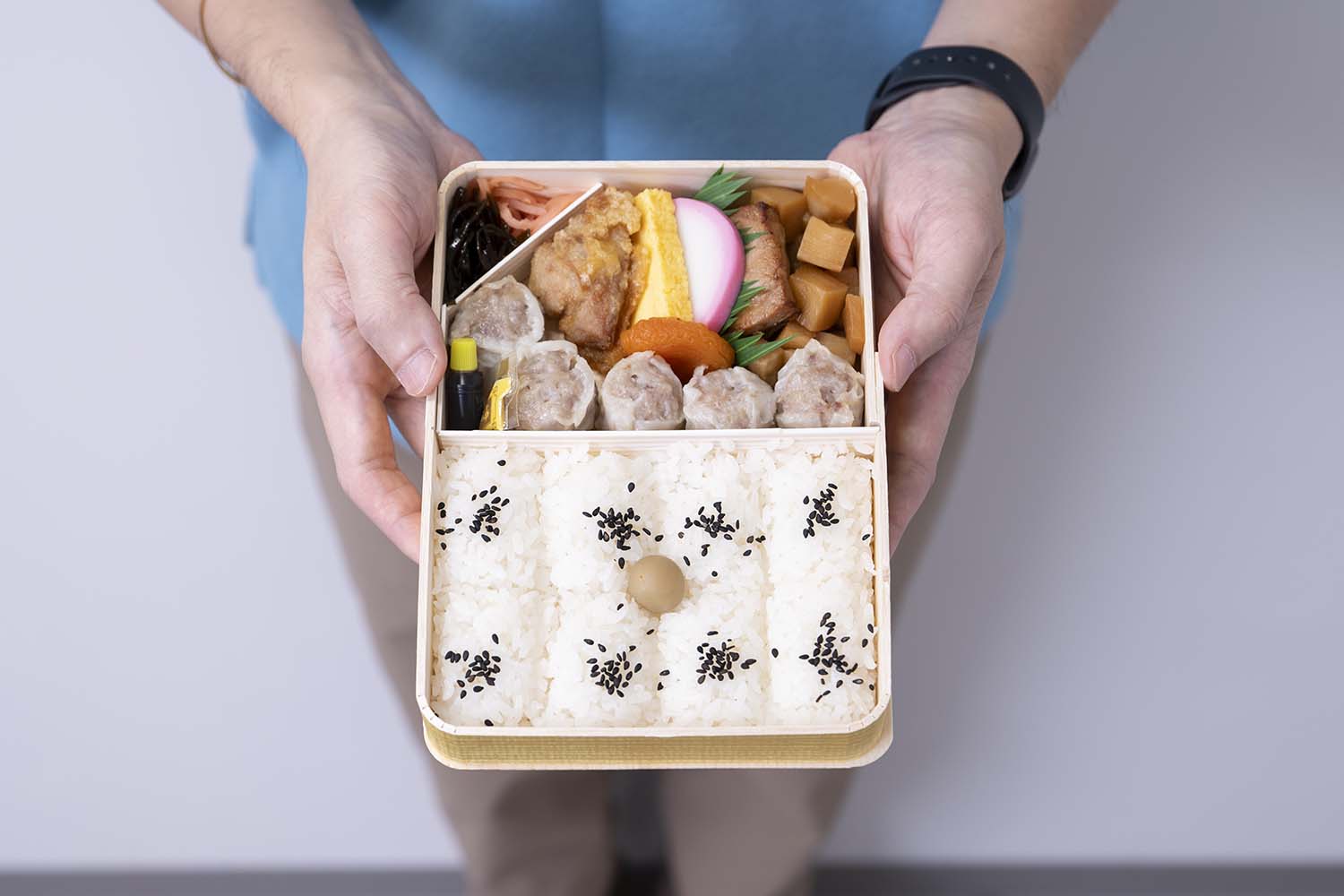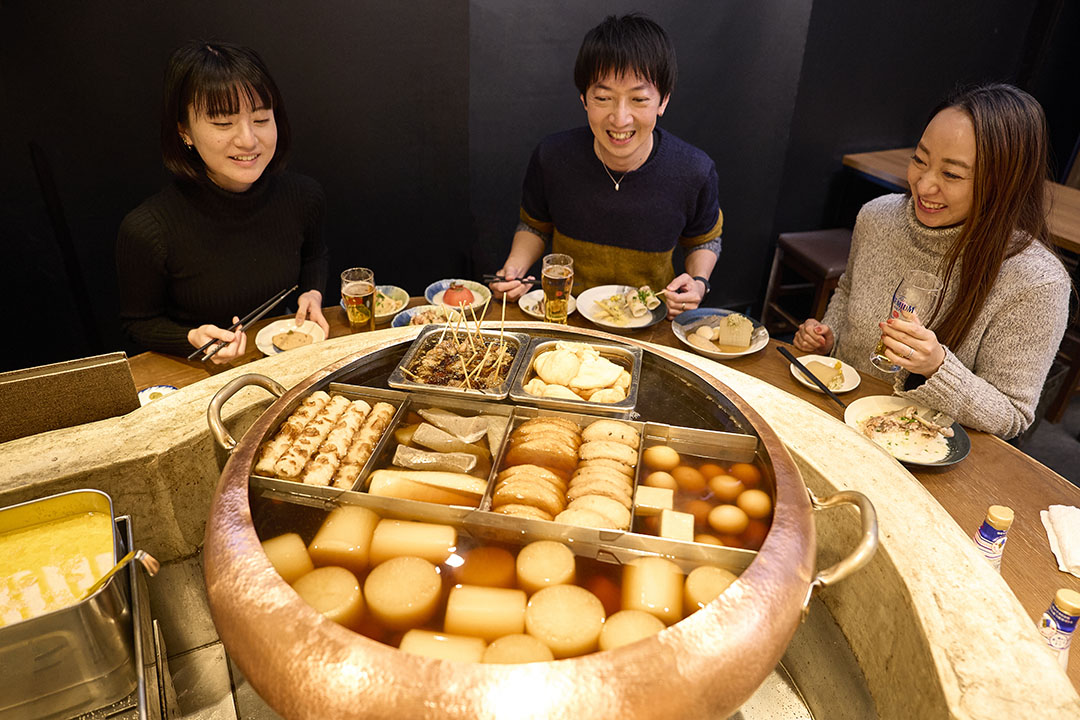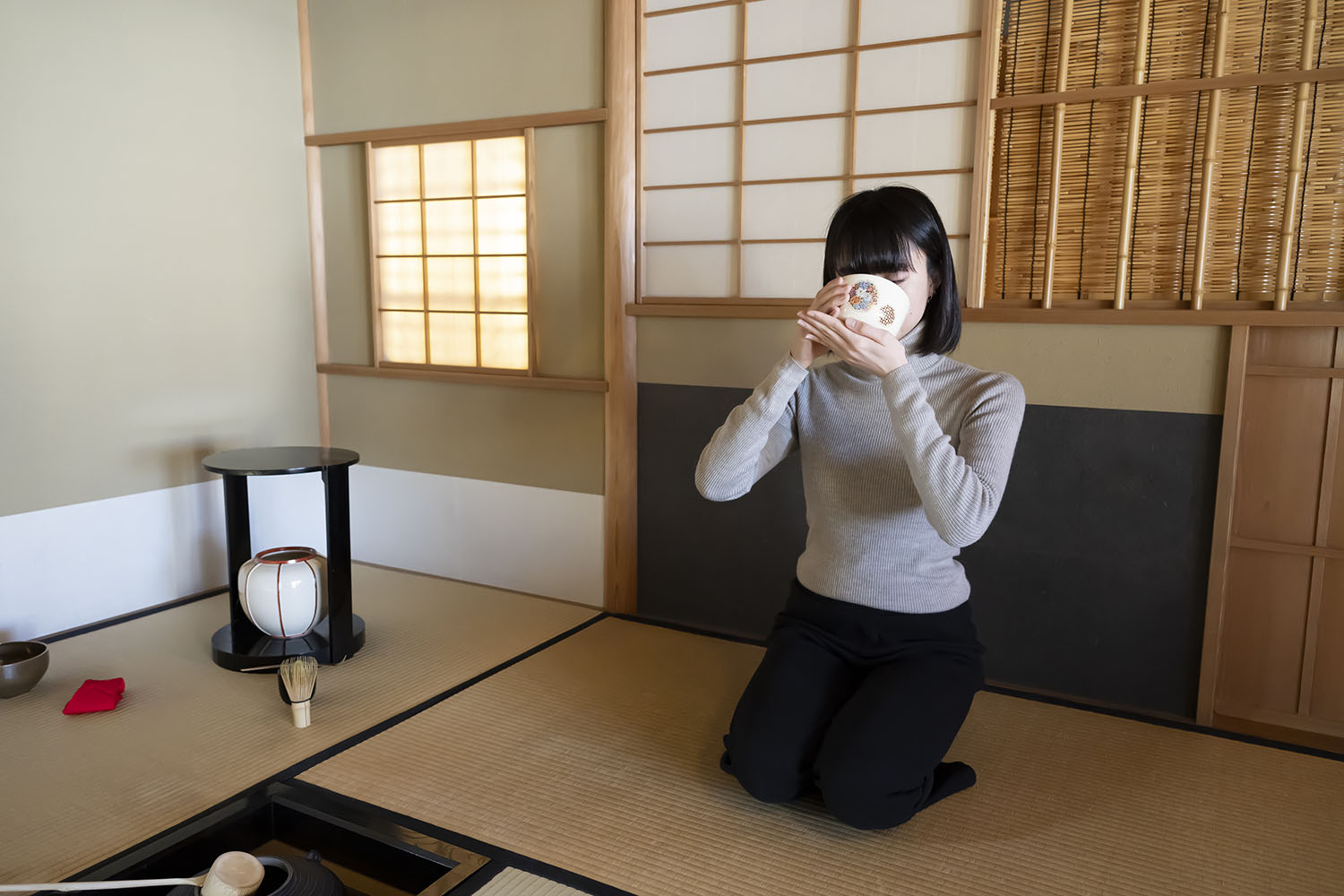
How to enjoy matcha | Studying teahouse etiquette at Fukujuen in Kyoto
Matcha (finely powdered green tea leaf) spread through Japan during the Kamakura period (1185–1333). The culture of appreciating tea has been part of Japanese lifestyles for hundreds of years. For this article, we visit the renowned teahouse, Fukujuen Kyoto Flagship Store, to try our hand at the traditional art of preparing and enjoying tea.
share:
Table of Contents
Understanding the Japanese tea ceremony
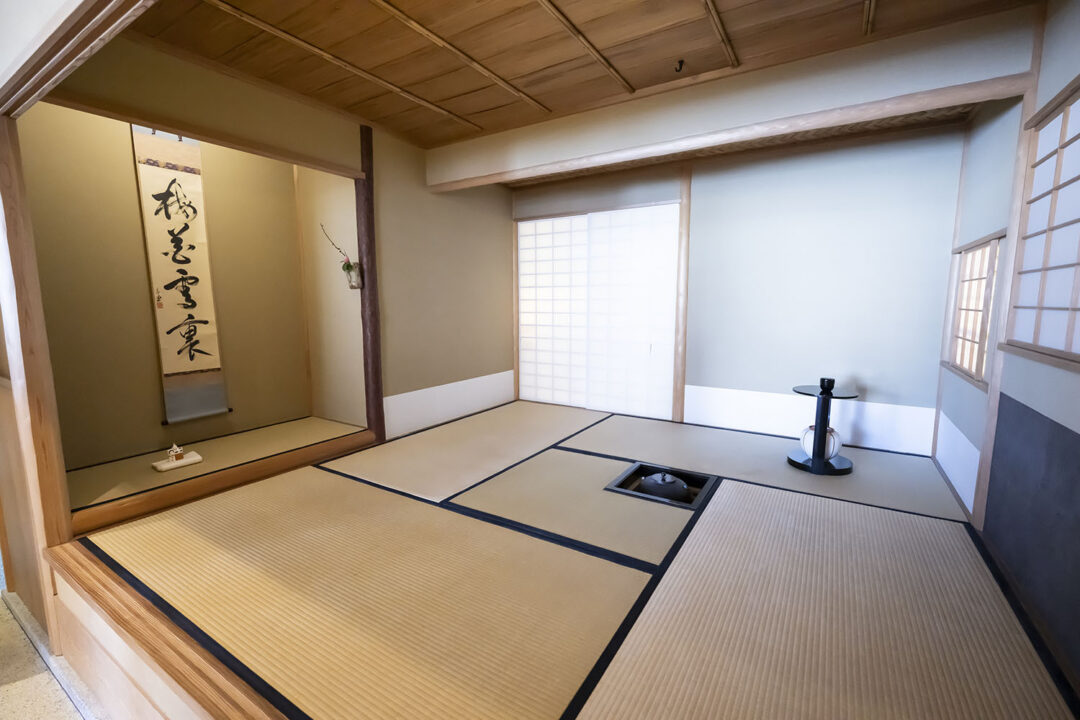
A vital concept of sado, the Japanese art of tea ceremony, is to appreciate all aspects of the space prepared by your host.
In the Japanese tea ceremony, appreciation is given not only for the matcha itself, but for the chashitsu (teahouse) which has been prepared solely for this day. The chashitsu will be decorated with elements such as seasonal flower arrangements and hanging scrolls for the visual enjoyment of guests – all to create a sense of thankfulness for this special day. A key philosophy is wakei seijaku, written with the kanji characters for “harmony”, “respect”, “purity”, and “tranquility”, meaning that the host and guests should show consideration for each other while preserving the atmosphere of cleanliness and purity. It is said that the true joy of the tea ceremony can be experienced by uniting the mutually respectful and humble feelings of the participants.
Cleanse hands at the tsukubai (low basin) before entering the chashitsu (teahouse)
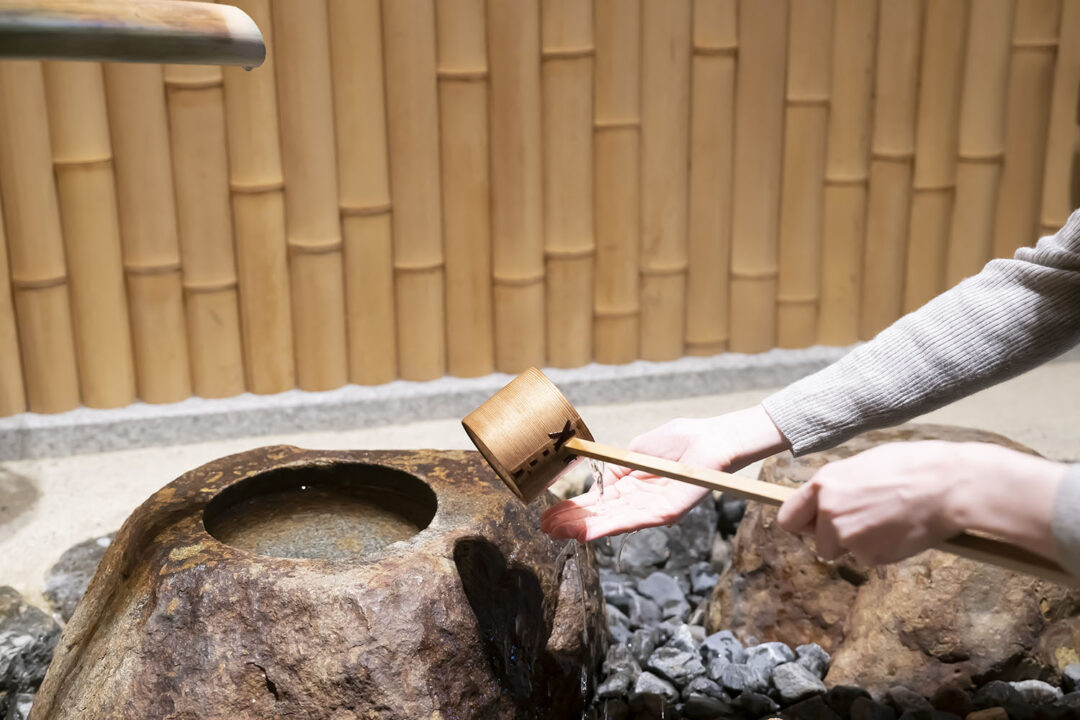
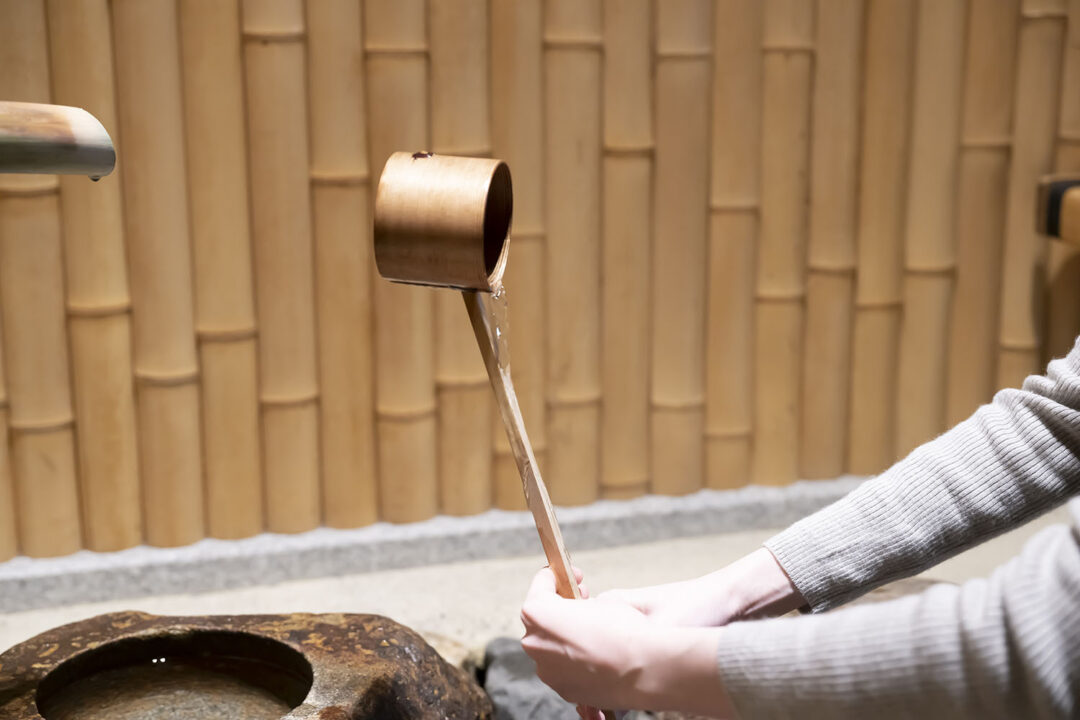
Before entering the teahouse, the first thing to do is to cleanse the hands and mouth using the tsukubai (low basin) outside.
Hold the handle of the hishaku (ladle) in the middle with your right hand, and pour water over one hand at a time, first the left, then the right. Next, clean your mouth. Lastly, hold the ladle in both hands as if to stand it vertically, and clean the handle in the remaining water.
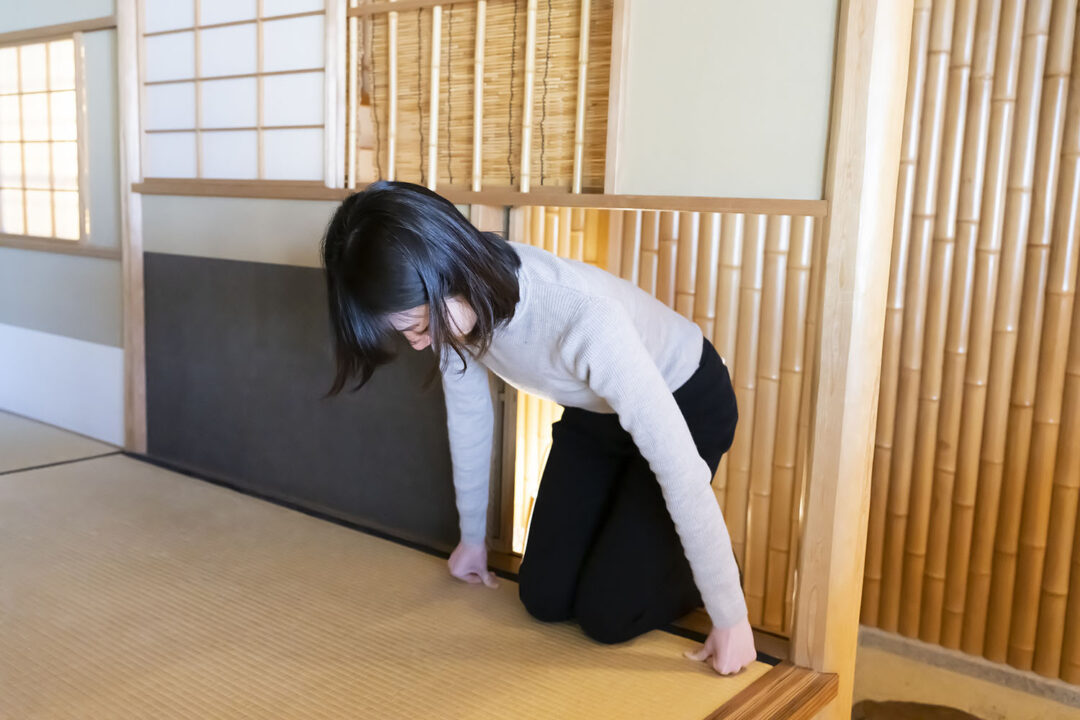
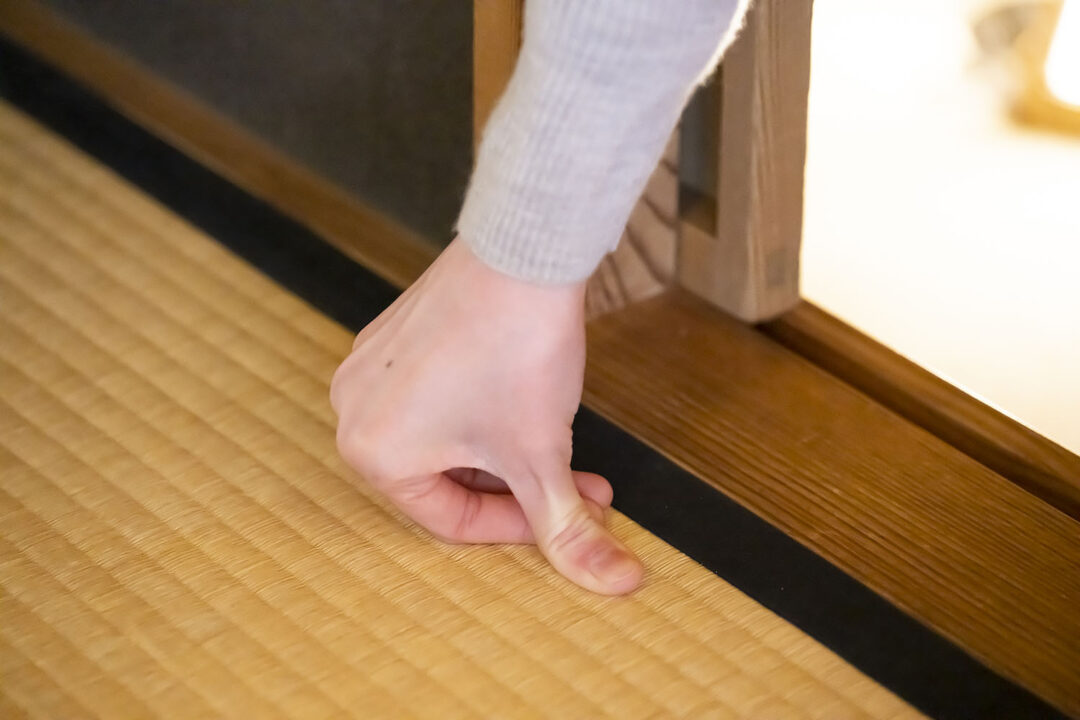
When you enter the teahouse through the nijiriguchi (crawling entrance), you should support your body with your thumbs and the gently curled other four fingers, as you kneel onto the tatami before entering.
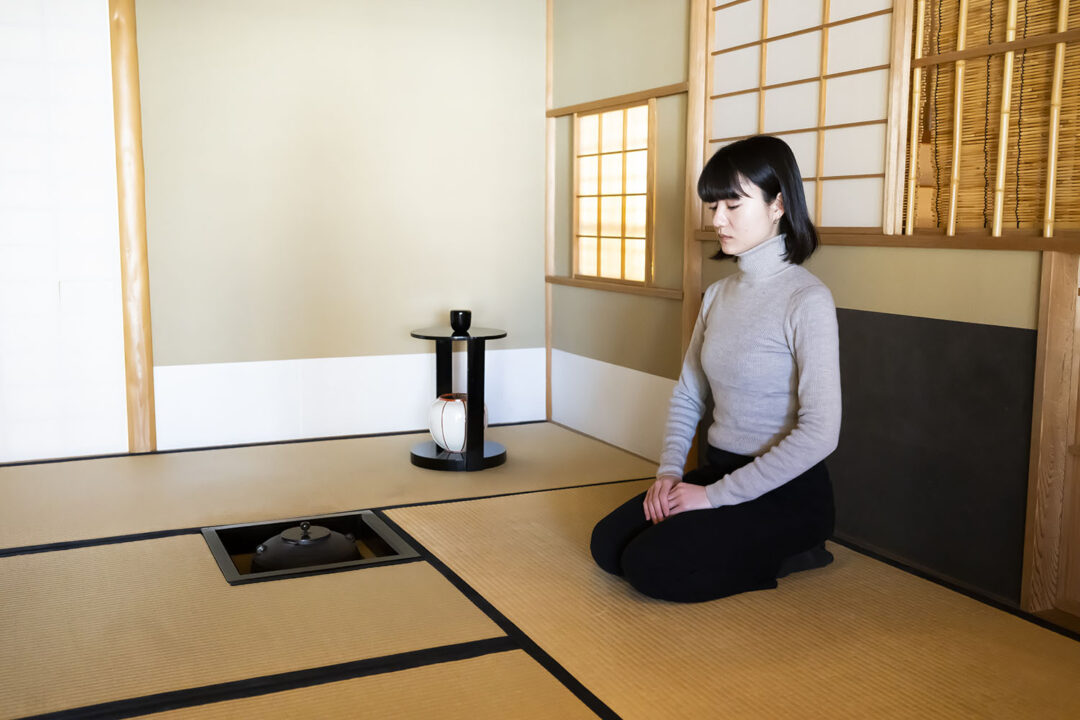
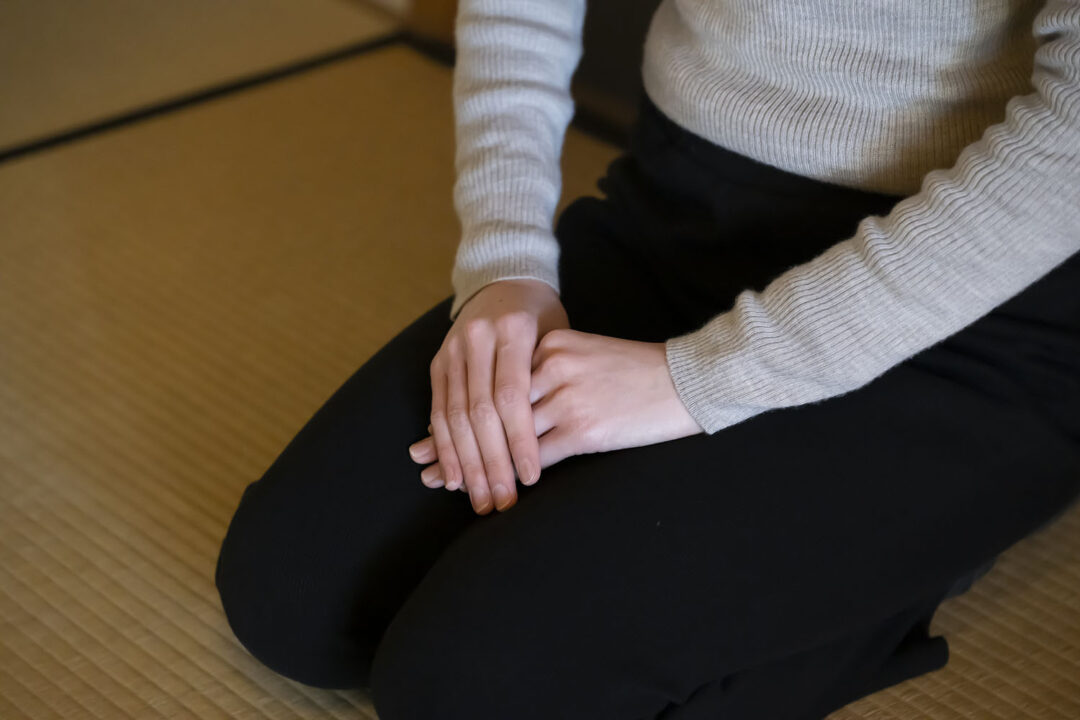
Once you have entered the teahouse, first, observe the tokonoma (alcove), then take your seat. When sitting, count the stitches from the edge of the tatami mat, and sit so that your kneecaps are in line with the 16th stitch. As you sit on your knees, align your fingers neatly, and gently place your right hand atop your left.
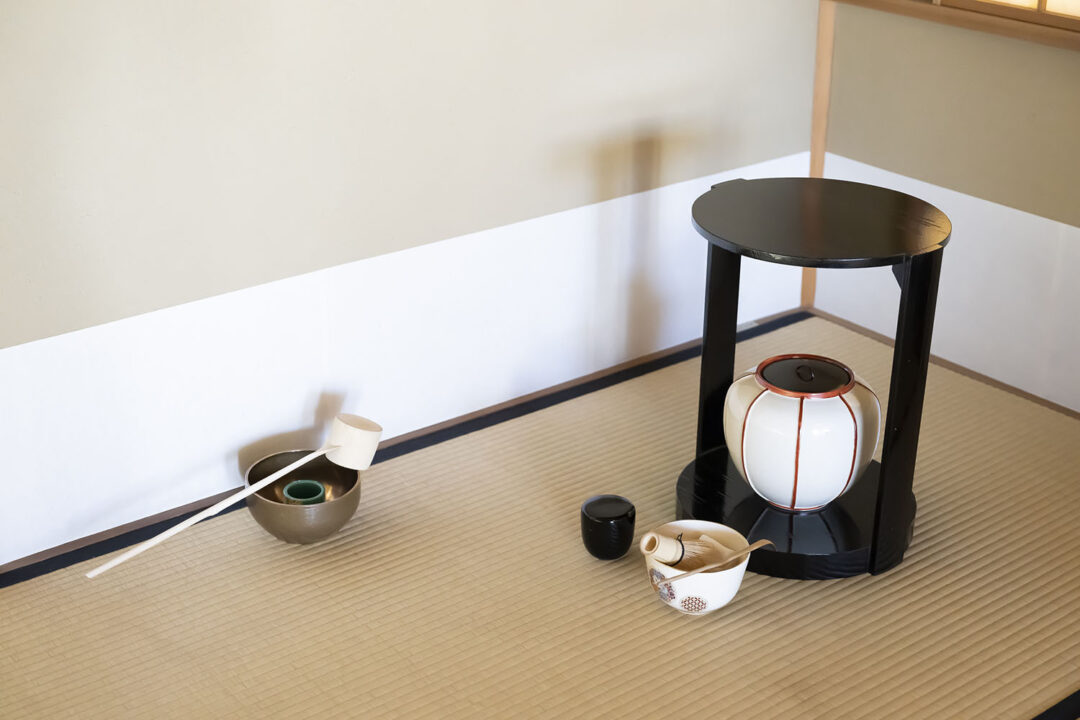
First, the tea ceremony host will serve matcha to the guests. Before partaking, let’s take a closer look at the etiquette and conduct.
Enjoy the wagashi (traditional sweets) first
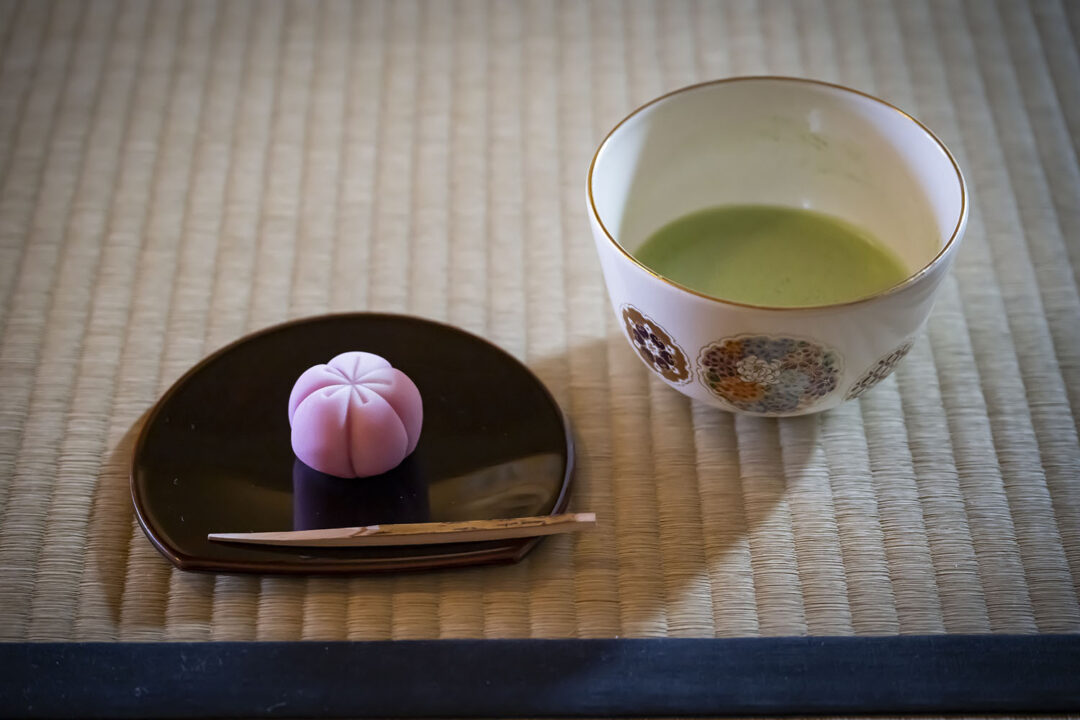
The host will prepare wagashi (traditional Japanese-style sweets), which should be completely eaten before drinking the matcha. Eating the wagashi will leave a lingering sweetness in the mouth, which will allow you to fully experience the characteristic bitterness and depth of flavor of the matcha. On this occasion, I received a nerikiri (soft confection of glutinous rice and white bean paste) shaped like the seasonal flower of peach blossom.
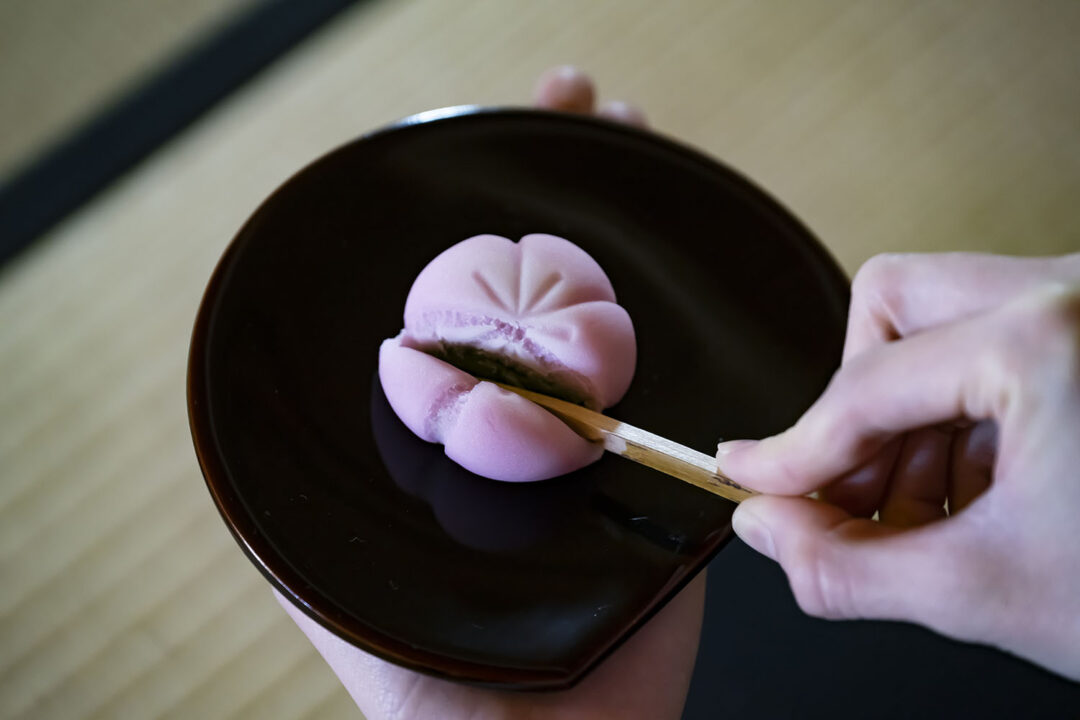
When partaking in wagashi, cut into bite-sized pieces.
How to hold the chawan (tea bowl)
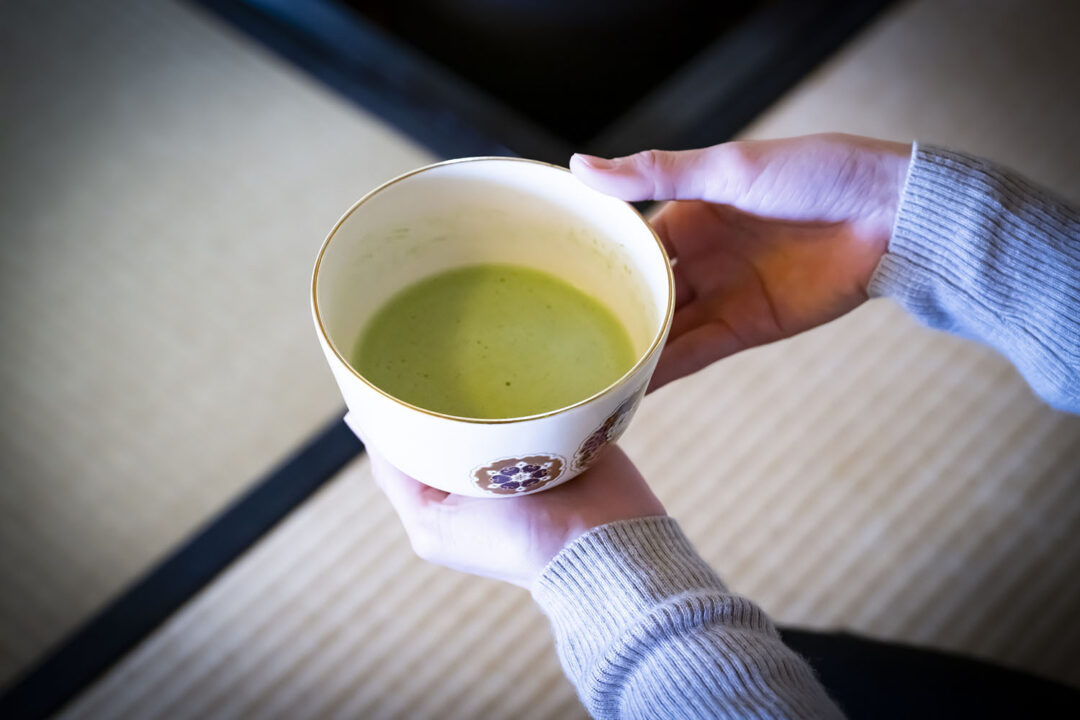
To hold the chawan (tea bowl), align the fingers of your left hand, then place the chawan atop your palm. Use the fingers of your right hand to support.
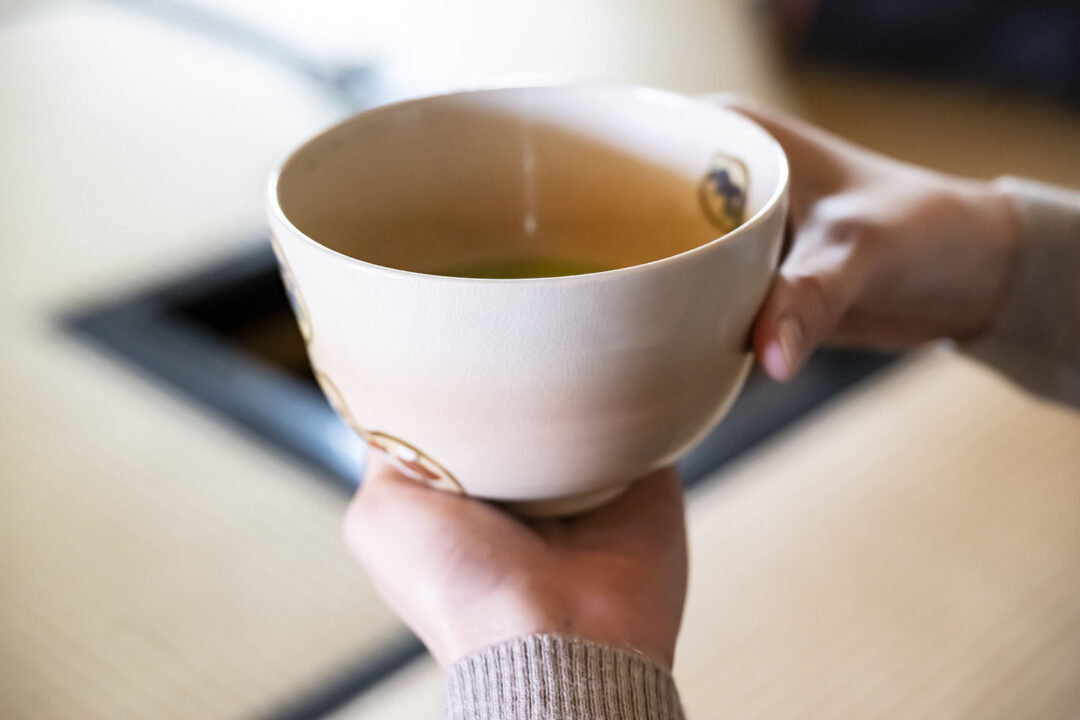
With the chawan on the palm of your hand, use your right hand to rotate it clockwise, so as to avoid drinking from the patterned area. Enjoy the matcha one sip at a time.
After you have finished drinking
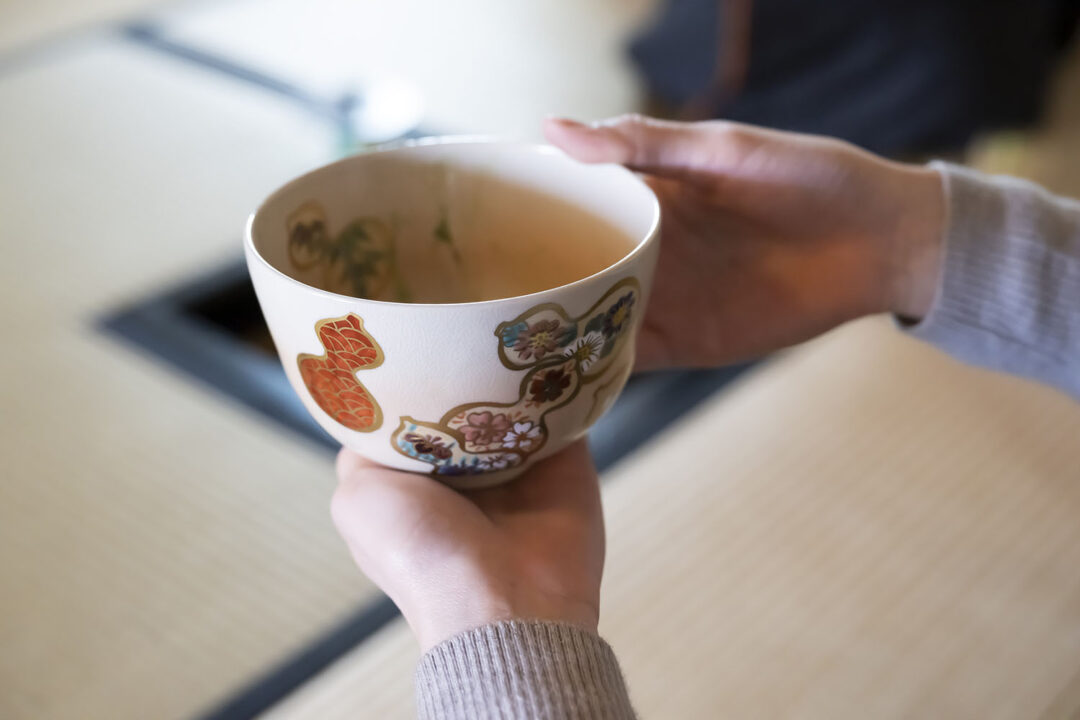
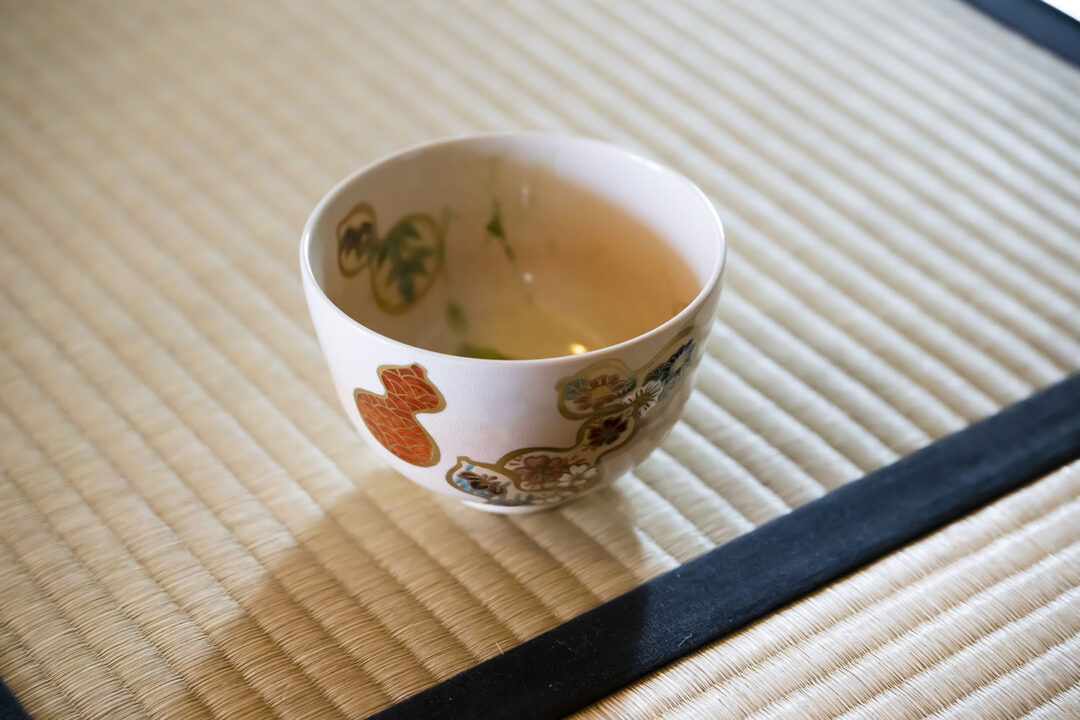
After you have finished drinking the matcha, finish the entire last sip with a quick sucking sound. This signals that you have finished drinking. Clean the lip with your fingers, rotate the chawan anticlockwise so that its pattern faces you, and place it beyond the edge of your tatami mat.

Finally, place both hands in front of your knees, and observe the chawan.
How to prepare matcha
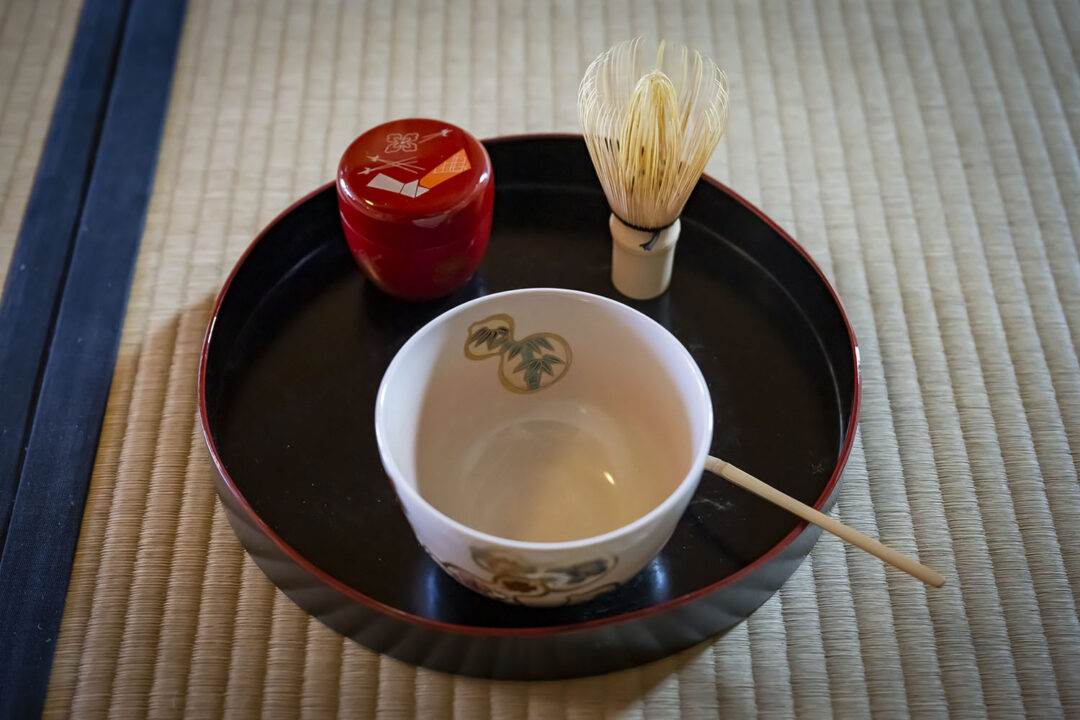
Next, let’s try actually preparing the matcha ourselves.
Clockwise from the front of this tray are the utensils: chawan (tea bowl), natsume (tea container), chasen (tea whisk), and chashaku (tea spoon).

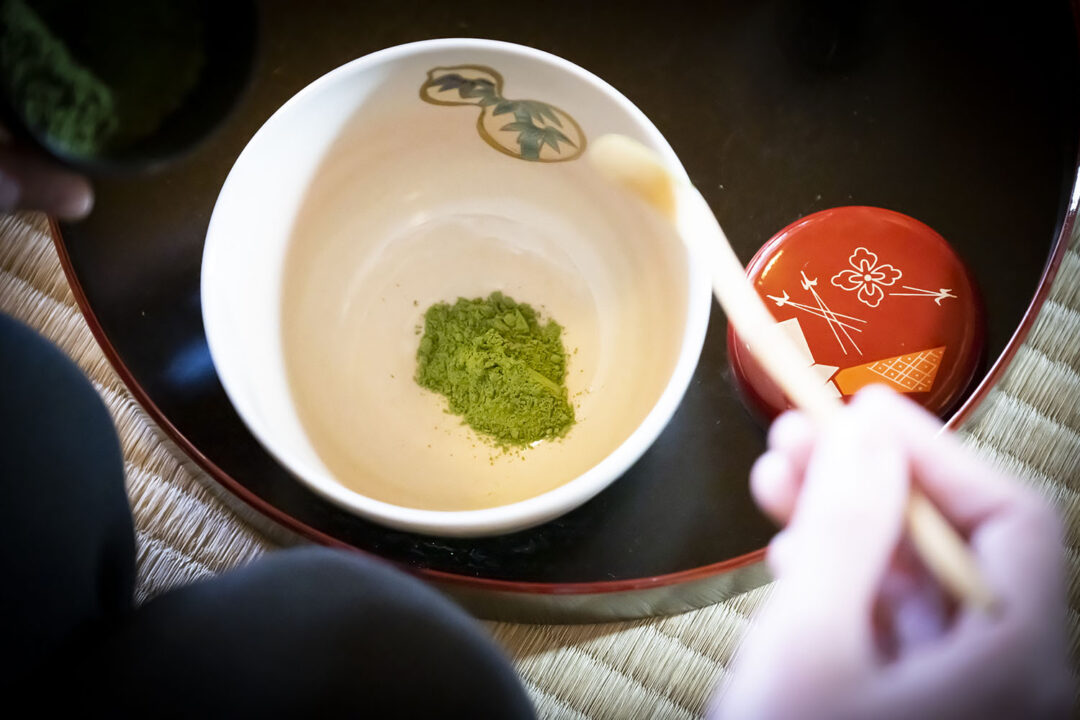
Take the chashaku, lift the lid from the natsume, and scoop two spoonfuls of matcha into the chawan. When transferring matcha into the chawan, do so carefully and solemnly.
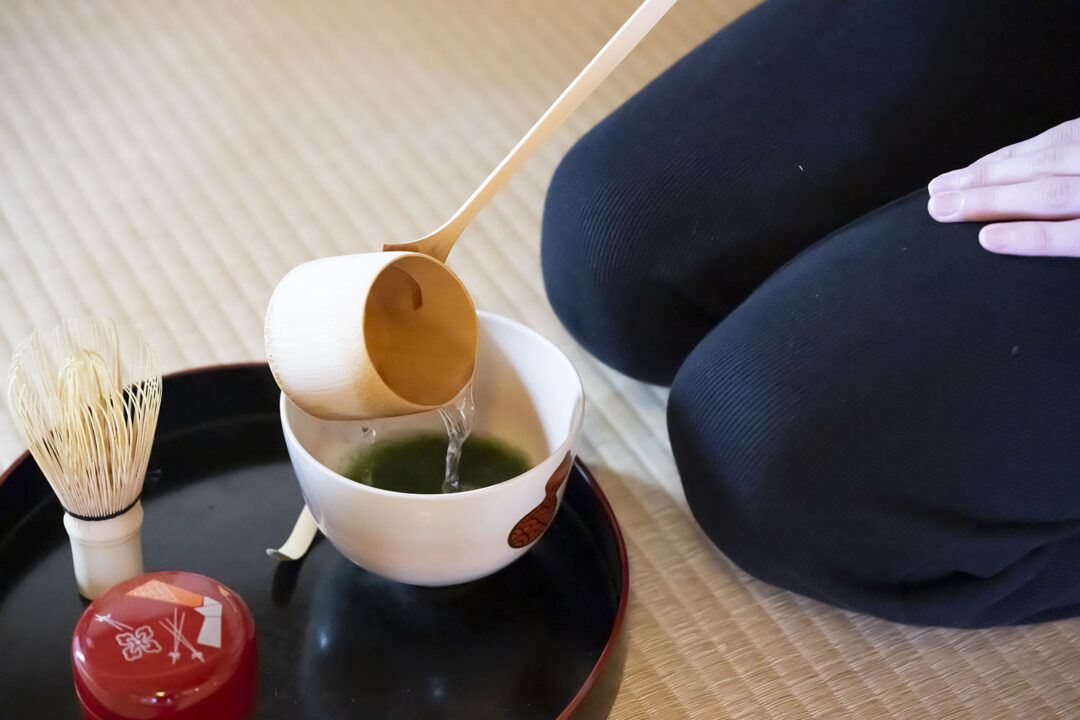
Use a ladle to retrieve hot water from the kettle, and fill the chawan to about one-third full.
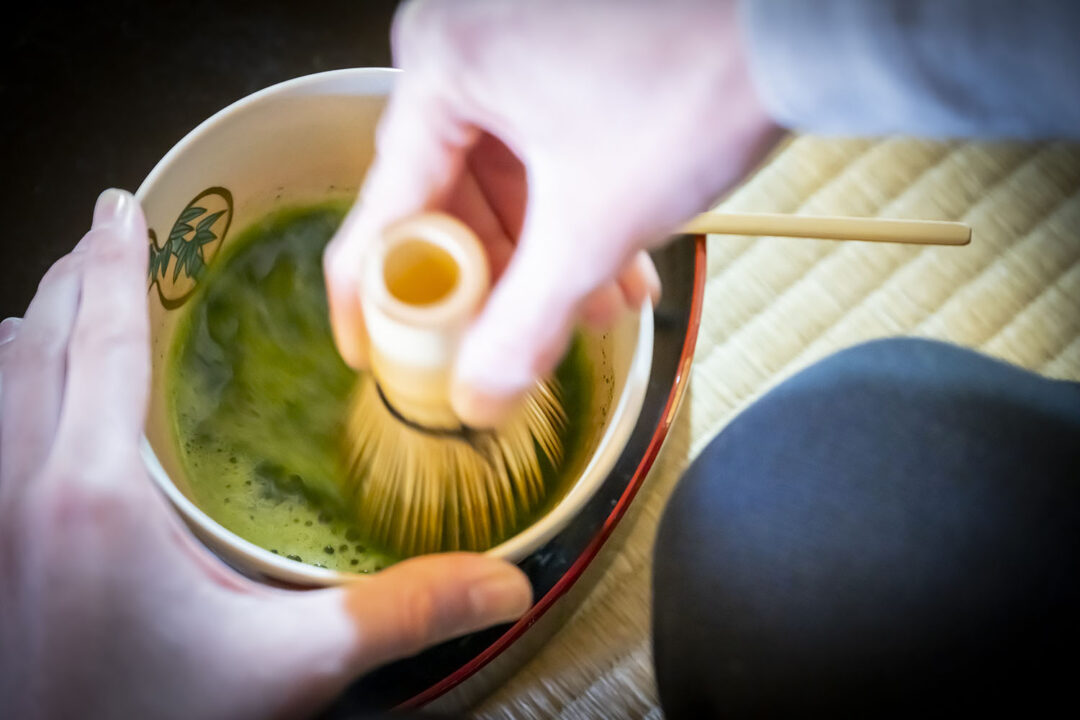
When making matcha, hold the chasen vertically, and use your left hand to firmly secure the chawan in place. Whisk forward and backward with the chasen briskly, producing a rustling sound. During this process, if the tips of the tea whisk are dragged across the bottom of the chawan, the matcha and hot water will not mix properly, impairing the formation of a beautiful froth. Except for your wrist, relax as much as possible as you make about fifty strokes.
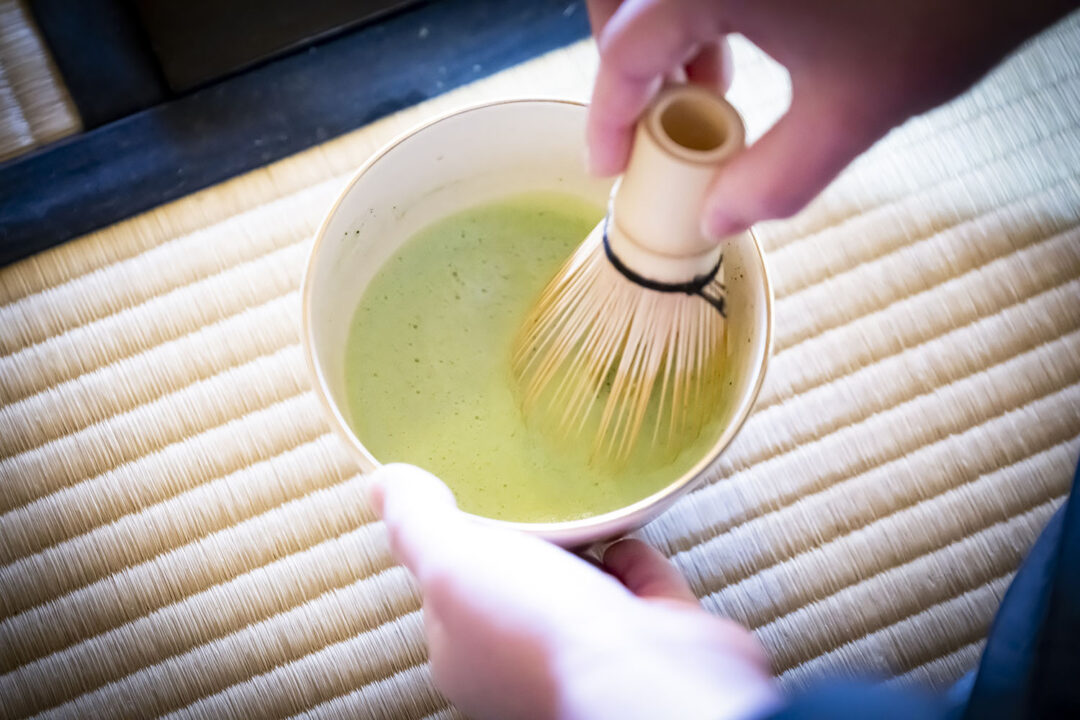
Producing a fine froth will give the matcha a mellow mouthfeel.
The ritual of preparing matcha will direct all of your focus within the chawan, allowing you momentarily leave behind your daily life, without the stresses of work and home. Matcha itself also has a relaxing effect. For a therapeutic break, consider skipping the usual coffee and instead making matcha at home!
* The published information is current as of February 2023. Prices and other details are subject to change.
Fukujuen was originally established as a tea dealer by FUKUI Iyemon in 1790 (year 2 of the Kansei period), located in what is now Yamashiro-cho, Kizugawa-shi, Kyoto prefecture. Nowadays, in addition to tea, Fukujuen carries a wide range of products such as matcha sweets and tea utensils. The Kyoto Flagship Store offers visitors the opportunity to experience Japanese tea in a wide variety of ways, with different activities available on each floor. Visit an authentic chashitsu (teahouse), try your own hand at preparing tea, and even enjoy French cuisine which uses Japanese tea.
share:













